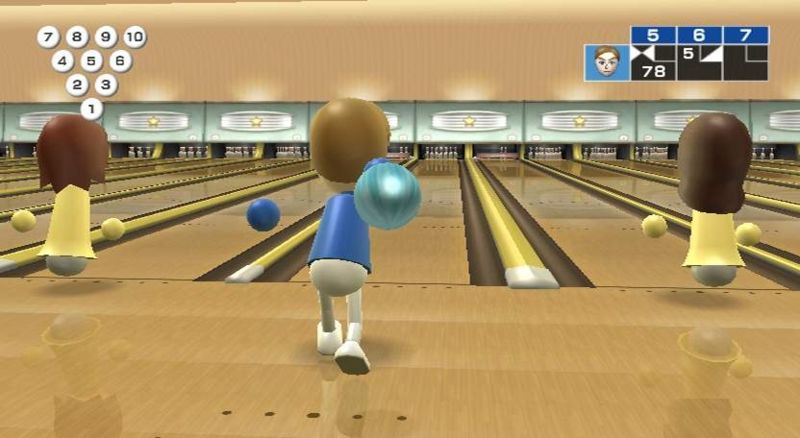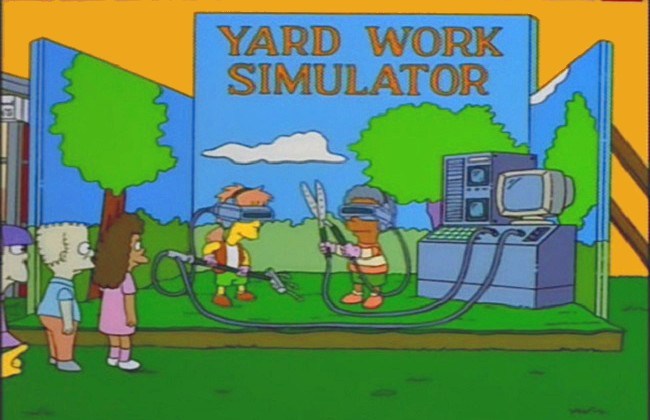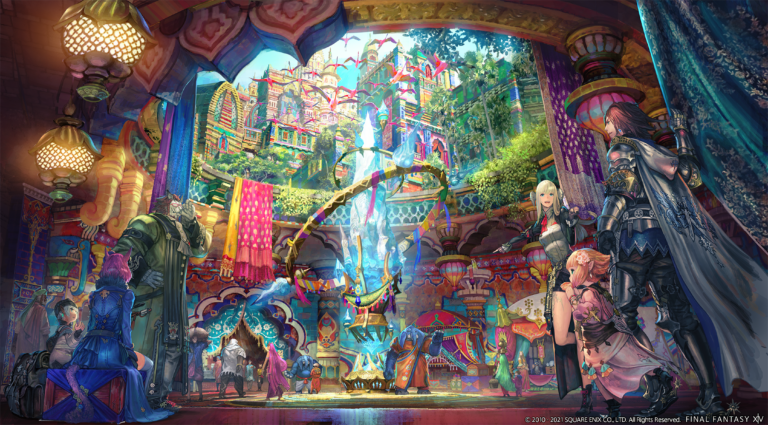Throughout the history of gaming, there have been a select few technological turning points that changed the direction of video games forever. You could say they include: the introduction of arcades, the arrival of home consoles (and subsequently, the death of arcades), and the leap from 2D to 3D graphics. These advances changed the landscape of games and decided the next playing field that they would exist on.
After 3D graphics, though, what is leap is left? Have they all been leapt over, or is there yet another one that will change the direction of gaming like its predecessors before?
Well, to better understand the scope of things thus far, we can divide advances in gaming technology into two categories: revolutionary and refining. “Revolutionary” includes the aforementioned leaps that we just talked about; the ones that introduce a whole new level of play.

“Refining” refers to the steps taken along the way that bridge those leaps and make them possible; these are graphical enhancements, for example. Though not exactly changing the game, they’re something that people care about along the way and look forward to seeing what refinement is made next: how will the next console graphics, or the next graphics card, compare to what’s out now? This is always fun because we get to step that much closer to realistic graphics, or a system with more impressive features, or software. Some graphics, as we’ve seen, age better than others — Super Mario World still looks like a gem, while Final Fantasy VII and its polygonal characters look a bit… ’90s.
That’s the proof of a revolutionary advancement, though. Games likes FFVII look rough now because they were embarking on an experimental leap forward into the three-dimensional frontier. The flaws are marks that they were experiencing a new world of possibilities. That’s exciting! That, I argue, is where we want to be. We want to be part of something special, don’t we?
Virtual reality has long been a “thing,” floating around in the public consciousness, but never considered a force — when your arguable biggest impact was the Virtual Boy, you haven’t quite hit it big yet as a technology.
The Virtual Boy may not have been considered a success, but Microsoft released a tablet in the ’90s that didn’t take off very much either. Could the Virtual Boy simply have been too ahead of its time?
As a technology, virtual reality is embarking like it never has before and is revealing itself as an imminent contender. Augmented reality is right there with it; we saw a glimpse into its true potential with Pokemon GO. Which, for all intense and purposes, was not a very great game at its launch, yet the technology is what made its popularity explode into a global zeitgeist. If a rather rudimentary game like that can have that grasp on people, what could a fully fleshed out AR experience potentially accomplish?
Back to VR, specifically: okay, you get it, it’s a thing that’s happening. But it’s happened before, and has been in many a cheesy sci-fi movie. So, what’s so special this time?
Well, there are two elements to that: it’s entering the public consciousness more than ever, and the software is starting to back it up. That second point is important: if the software isn’t there, it’s not going to float long-term; a look at Microsoft’s Kinect may be relevant. The games can’t just be gimmicks and tech demos, which VR as a technology is particularly vulnerable to; we need more than to jankily fly through the sky on a Harry Potter broomstick that has a mind of its own, and that’s the whole game. No, the games need to actually be games. And not just games, they need to be fun.
This is where my confidence in VR comes from: the games are actually there this time. Look at the quality of Star Trek: Bridge Crew, or Beat Saber, or Astro Bot Rescue Mission. These are titles that have a base element of fun behind their concept, are executed well, have been very successful with audiences, and try to do more than show off the tech by being their own experiences. Though some flaws may pop up in these early stages of the genre, just like with the 3D exploration of the ’90s that preceded it, these are “game-games” and the type of software that will cement VR.
So, what’s holding it back right now? Why is VR still a relatively niche field and not known by the older folks who very much know Wii Sports or know that their grandkids loving playing that Fortnite?
Well, one thing: logistics. Consumer logistics, as in, getting your product into the hands of the average consumer. VR, like with all new technologies in their early days, is quite expensive; for your own personal setup, you’re looking at an investment upwards of a thousand dollars, and quite a bit higher if you want the good stuff.
Remember those arcades that home consoles basically killed? Well, the ’80s arcades of yore sprung up in the first place for a good reason: like with all goods or services, they were there because there was a need for them. If people wanted to play video games, they needed arcades. Because what are you going to do otherwise, buy a home arcade cabinet costing over a thousand dollars?
Sure, enthusiasts will. And niche fields can sometimes survive off enthusiasts. But to become the next big thing, you need to be able to reach everyone. Wii Sports reached everyone due to an affordable price point: free (being bundled with the Wii). Fortnite also shares the same price point: free.

No one expects VR to be free. That is silly. But both those games can be played on systems that only cost two to three hundred dollars, while we have established the investment needed to play VR. In other words, the price needs to be brought down to a consumer-friendly level before it will really take off. In the meantime, VR arcades fill that void.
The second thing that VR needs to take off is a true killer app — a “system seller” of a game. It needs a champion. There are many strong titles for it already, but what’s going to cause the cultural phenomenon?
I don’t know. I’m not a psychic (except in my Dungeons & Dragons campaign, of course). But, it’s going to come. My bet is that it’s going to be an MMO, because people get sucked into that genre already just playing with keyboard and mouse. Imagine how immersive those games would be when you’re inside those worlds via VR?
Whatever the champion title of VR will be, it could even become too powerful over society, and have more of a grasp on it than preferred, since the technology lends itself to replacing our own reality. We should always be the masters of our technology, not the other way around… despite how fun the tech can be sometimes.
In games, there have been leaps forward, and I believe that the biggest one has yet to be seen. In an age of “born too late to explore the earth, born too early to explore space,” having this uncharted frontier ahead of us is very exciting. Virtual reality, this time, is here to stay. The VR door is unlocked, now all that’s left is the right price point and the right champion to enter the game.







Comments are closed.